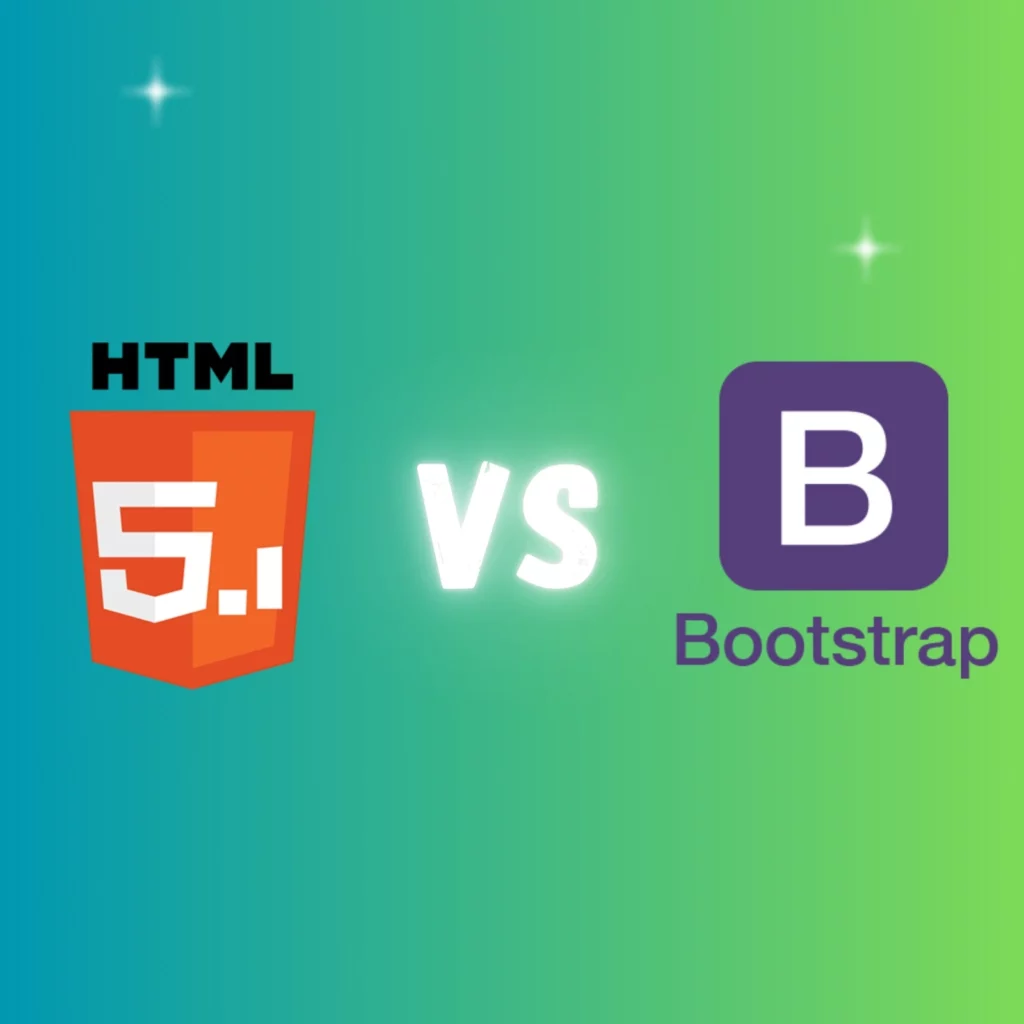In the ever-evolving landscape of web development, staying current with the latest technologies is paramount. Among the many tools at a developer’s disposal, Bootstrap and HTML5 stand out as two foundational pillars. In this comprehensive guide, we will delve into these technologies, exploring their features, benefits, and how they work together to create stunning, responsive websites.
Introduction to Bootstrap and HTML5
In the digital age, a website’s appearance and functionality are pivotal factors in its success. Bootstrap and HTML5 are two indispensable tools that web developers employ to create user-friendly, responsive, and visually appealing websites. Let’s start our journey by understanding these technologies individually before exploring how they complement each other.
Understanding HTML5: The Backbone of Modern Web
The Evolution of HTML
HTML, or HyperText Markup Language, has undergone significant evolution over the years. HTML5, the latest iteration, introduces a plethora of new elements and features that redefine web development. Gone are the days of using div tags for everything; HTML5 brings a semantic structure to web documents.
Key Features of HTML5
HTML5 boasts an array of features such as native support for audio and video, improved form elements, the canvas element for graphics, and geolocation capabilities. These features empower developers to create rich, interactive web applications with ease.
Getting to Know Bootstrap: A CSS Framework for Speedy Development
What is Bootstrap?
Bootstrap is an open-source CSS framework developed by Twitter. It offers a library of pre-built CSS and JavaScript components that streamline the web development process. By harnessing Bootstrap, developers can create responsive, mobile-first websites effortlessly.
Advantages of Bootstrap
Bootstrap’s advantages include rapid development, consistency in design, and cross-browser compatibility. It simplifies complex layout tasks and provides a robust foundation for responsive web design.
Setting Up Your Development Environment
Before diving into coding with HTML5 and Bootstrap, it’s essential to set up your development environment. Ensure that you have a code editor, web browser, and a basic understanding of HTML and CSS.
Creating Your First HTML5 Document
Basic Structure of an HTML5 Document
In HTML5, a basic document structure consists of the `<!DOCTYPE html>` declaration, the `<html>` element, the `<head>` section, and the `<body>` section. Let’s break down these components:
- The `<!DOCTYPE html>` declaration specifies the document type.
- The `<html>` element encloses the entire document.
- The `<head>` section contains metadata and links to external resources.
- The `<body>` section holds the visible content of the web page.
Semantic Elements in HTML5
HTML5 introduces a wide range of semantic elements, including `<header>`, `<nav>`, `<article>`, `<section>`, and `<footer>`. These elements provide a meaningful structure to your web page, making it more accessible and SEO-friendly.
Bootstrap Essentials
Installing Bootstrap
To kickstart your project with Bootstrap, you need to include its CSS and JavaScript files in your HTML document. You can either download Bootstrap or link to its content via a Content Delivery Network (CDN).
Grid System: Building Responsive Layouts
Bootstrap’s grid system is a powerful tool for creating responsive layouts. It divides the web page into a grid of 12 columns, allowing you to arrange content in a flexible and mobile-friendly manner.
Styling with Bootstrap Classes
Bootstrap offers a plethora of pre-defined classes for styling elements. You can apply these classes to buttons, forms, typography, and more to achieve a consistent and attractive design.
Enhancing User Experience with HTML5 Features
HTML5 brings several features that enhance the user experience on your website.
Audio and Video Integration
With HTML5, you can seamlessly embed audio and video content without relying on third-party plugins. This ensures compatibility across various devices and browsers.
Geolocation and Maps
HTML5’s geolocation API enables you to access a user’s location, opening the door to location-based services and maps integration.
Form Improvements in HTML5
HTML5 introduces new form input types and attributes, making it easier to create user-friendly and validated forms.
Bootstrap Components: Ready-Made Building Blocks
Bootstrap provides a treasure trove of components that expedite development.
Navigation Bars
Bootstrap’s navigation bars simplify the creation of sleek and responsive navigation menus.
Carousels
Carousels are dynamic slideshow components that allow you to showcase images and content in an engaging manner.
Modals
Bootstrap modals are pop-up dialog boxes that can display additional information or forms without navigating away from the current page.
Optimizing for SEO: HTML5's Semantic Markup
Search engine optimization (SEO) is crucial for visibility on the web. HTML5’s semantic elements play a pivotal role in enhancing the SEO-friendliness of your website.
Header Tags for SEO
HTML5 offers header tags from `<h1>` to `<h6>`, allowing you to structure your content and improve search engine rankings.
Structured Data with Microdata
By incorporating microdata, you can provide search engines with structured information about your content, leading to rich search results.
Advanced Bootstrap Customization
Customizing Bootstrap Themes
Bootstrap’s theming capabilities enable you to customize its appearance to match your brand or project’s unique style.
Adding Plugins and Extensions
Extend Bootstrap’s functionality by integrating third-party plugins and extensions for added features and interactivity.
Responsive Web Design with Bootstrap and HTML5
Media Queries and Breakpoints
Responsive web design is a necessity in today’s multi-device world. Bootstrap simplifies this with media queries and breakpoints for fluid design adaptation.
Responsive Images
HTML5’s `<picture>` element and Bootstrap’s responsive image classes ensure that images adapt to different screen sizes and resolutions.
Accessbility and HTML5
Creating an accessible website is essential for inclusivity.
Creating Accessible Websites
HTML5’s semantic elements and proper use of ARIA roles and attributes contribute to web accessibility.
Semantic HTML for Accessibility
Semantic HTML5 elements convey the document’s structure, aiding screen readers and assistive technologies.
Performance Optimization
Optimizing performance is crucial for a smooth user experience.
Minifying CSS and JavaScript
Reduce load times by minifying your CSS and JavaScript files.
Lazy Loading Images
Implement lazy loading to improve page load times, especially for image-heavy websites.
Security Considerations
Ensuring your website’s security is paramount.
Cross-Site Scripting (XSS) Prevention
Implement security measures to prevent cross-site scripting attacks.
Data Validation and Sanitization
Validate and sanitize user inputs to protect against malicious data.
Conclusion: The Power of Bootstrap and HTML5
In this journey through Bootstrap and HTML5, we’ve uncovered their individual strengths and seen how they complement each other. These technologies empower web developers to create modern, responsive, and user-friendly websites that meet today’s demanding standards. Harness the power of HTML5’s semantic markup for SEO and accessibility, and expedite your development process with Bootstrap’s ready-made components. As you embark on your web development endeavors, remember that mastering these tools will open doors to creating web experiences that captivate and engage users.


